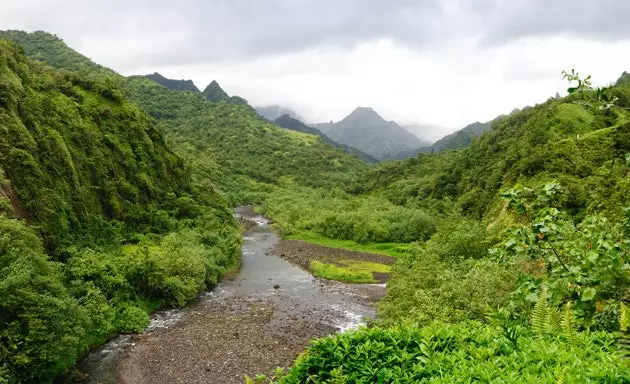
The Papeno Valley
Landing in the port of Papeete 121 years later is disappointing. The common visitor is not expected to be received, like Paul Gauguin in 1891, by the French ambassador and his entire political-military entourage with open arms. On the retina, wonderful pictures with names like Mata Mua, Manao Tupapau or Fatata te mipi that directly refer to very distant places that perhaps no longer exist... or do they? Of course, the first impression is that of having arrived in one more colony of the West. The powerful peaks of the dormant volcanoes that inhabit the center of the island are the only ones that allow us to intuit that what Gauguin himself found, what inspired and even tormented him, still survives in their shadow.
For its part, the Papeete of the 21st century goes its own way . There is no debate, here what prevails are the Carrefours, the McDonalds and the bureaucratic red tape. Consequences of being the capital of this French overseas territory. Of what the Gallic genius found when he arrived, there is nothing left but the market , already remodeled. The spiral of swinger sex and cheap prostitution that moved around it (and to which the painter regularly attended) has disappeared today, while the libertine morality protected by cadets corrupted by the flesh is today buried under the imposing and cheerful tower of the Cathedral.
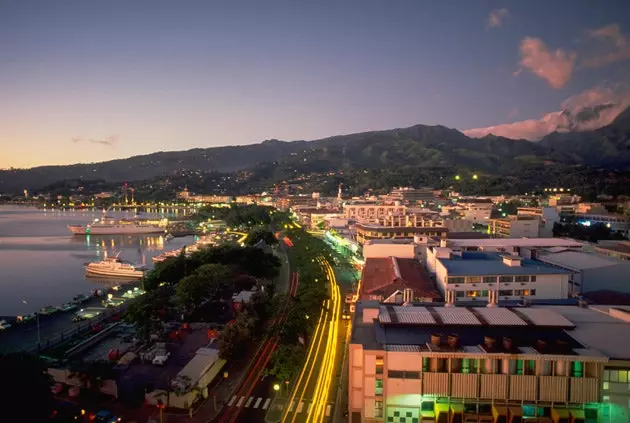
The port of Papeete, today
But as much as it has been evangelized, corrected, modernized and Westernized, the market maintains that daytime joy characteristic of Polynesia . Especially on the ground floor, where the best fresh food arrives every day, with an almost alien and implausible color. The stalls are attended by bulky women with a pleasant character who liven up the morning with superficial chatter with their store neighbor. 100 years ago, their daughters would probably fall into the nets and enchantments of the Europeans who promised them gold and the Moor. As happened in their day to Tehura or Pau'ura, lovers, wives and models of the prolific artist during his years in Tahiti-Nui.
It is absurd to try to find the same predisposition and innocence in young Tahitians, today more educated and accustomed to the lifestyle of the colonizers, with Zara shorts and Roxy bikinis. The Frenchification suffered has eliminated any vestige of accidental nudity, of wild and involuntary eroticism. , of exotic rural routine. The muses that inspired Paul are no longer to be found, the ones that made him obsessed with transferring them to canvas, with portraying his virgin beauty while he fled from the conventions that stifled art.
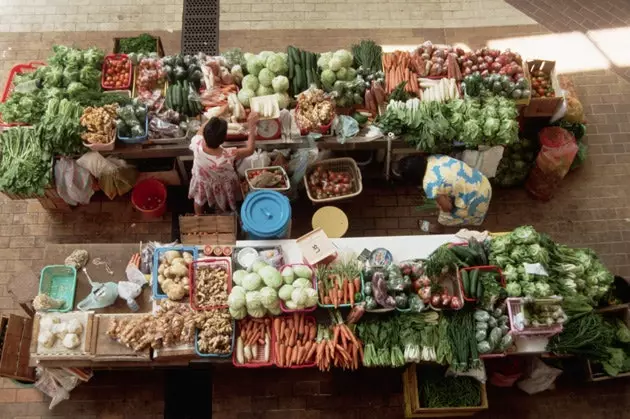
Papeete's market
What does remain is the overflowing nature where his paintings were framed. After his voluntary deportation and his return to paradise, Gauguin moved his residence to the outskirts of Punaauia and Paea , where he planted his humble nomadic hut in full dialogue with the forest and the mountain. The first few months he lived comfortably, traveling to the nearby capital by car to spend his earnings. Today the old road has been replaced by the only stretch of highway in the entire country.
Protected by the deep green, by the small valleys, he began to look for the gods and the third sex (men who looked like women) entering the small gorges, where according to the painter these incorrupt beings would hide. The visitor today can feel the same sensation when entering valleys such as the Papenoo, the most accessible for the common hiker. It is known as the one with 1,000 waterfalls due to the numerous waterfalls that rush down the steep cliffs of the mountains. Too green, yes, but still it is not difficult to imagine the peace that the painter personalized with his psychological palette.
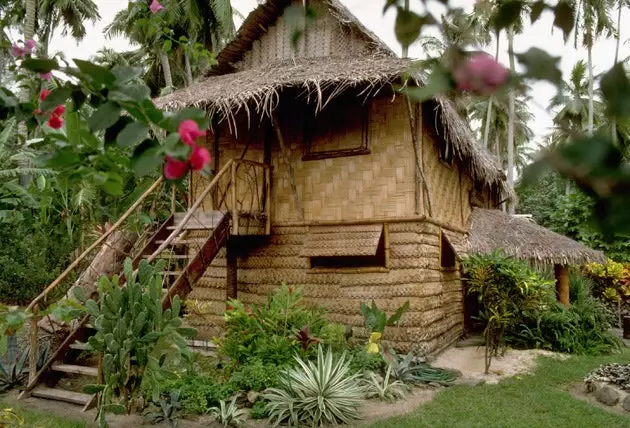
Gauguin's house in Tahiti
The predatory desire that Gauguin displayed during these years made him end the patience and favors of the indigenous people and forced him to move his residence to the south, until he reached paperi , just across the Papenoo. Here it is conserved, next to the highway that surrounds the island, the Paul Gauguin museum, with the copies of the works that he created in this place . It is a somewhat peculiar center, with an unwarranted Japanese style and huge statues of Tikis (Polynesian gods) that recall the artist's commitment to preserving indigenous religious images and icons and keeping them away from uncompromising missionaries.
Before succumbing to the infirmities of age and a syphilis that eroded his health, Paul had time to continue his journey by leaving until Marquesas Islands . In Atuona , the capital of hiva oa , would spend his last breaths, obsessed with the supposed cannibalism that its inhabitants practiced. Once he became aware that this search was unsuccessful, he dedicated himself to annoying the local bishopric and starting a legal fight in favor of the indigenous people. And even so, he had time to paint curious works such as 'The Sorcerer' (one of the few pictures with a masculine theme), 'Riders on the beach' (a clear tribute to Degas) or 'Contes Barbares', where he appears self-portrait, in the which refined his style and opened the door to Fauvism and Expressionism.
As a result of his stay, a cultural center with his name and his grave in the beautiful cemetery of Atuona . His tombstone, not far from that of Jaques Brel, also a lover of Tahiti, is a pilgrimage center that, mythomania aside, has a pleasant surprise. One of the most impressive sunset that we have seen, when the orange sun takes a dip in the turquoise sea, something that has happened every day in the last 109 years and that will continue to happen , whatever it is that pushes the visitor or the artist to this part of the world.
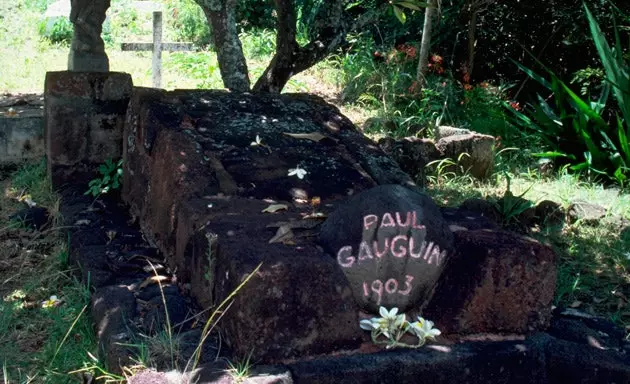
Paul Gauguin's grave
